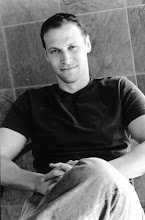High-stakes…a ticking clock…violence on the page…the audience’s being aware of the villain’s plotting—odds are you’re already familiar with the elements that define a thriller if you’ve found your way to this website. You’ve also likely stumbled over the classic blurb and jacket-copy catch-phrases that these fundamentals, when well executed, give rise to: “breakneck pacing,” “white-knuckle action,” “roller-coaster ride,” “better than Cats.” Okay, so maybe not the last one. The bottom line is, thrillers are often badder, meaner, and bigger than other forms of crime fiction. Think Thomas Harris over Agatha Christie, or, in other mediums, 24 over Murder, She Wrote, or In the Line of Fire over Sleuth. In a thriller, you’re more likely to find Dr. Lecter in the kitchen with liver and fava beans than Colonel Mustard in the conservatory with the candlestick. So it goes. Concerned parent groups lobby here.
Having the reader in the pretentiously titled “superior” position—meaning they’re riding shotgun with the good guys AND the bad guys through various scenes—of course doesn’t mean that there aren’t surprises (or, in blurbspeak “more twists and turns than a….”). I tend to structure my books so that the reader follows both sides of an impending collision, but the scenes with the antagonists I write a bit more hazy on specifics, so it’s never entirely clear what they’re up to or when the plot is going to reverse itself. Toward the end of a book, I’ll often have my antagonist fall out of the plot for several chapters, so his or her reappearance is startling—surprising due to machinations set in motion while the author (poor sod) took his eye off the ball.
As a rule, research seems to play a significant role in thrillers. Of course, authors of other genres can be brilliant researchers (here I envision Tom Wolfe bludgeoning me with an ivory-headed cane for my crass generalization) but thriller writers in particular seem to enjoy rolling up their sleeves and getting dirt under their fingernails. Maybe this is because thrillers are rife with bomb-making and forensic trails—try writing about THOSE convincingly without doing some field work. I use my books almost as an excuse for continuing education. I’ve sneaked onto demolition ranges with Navy SEALs to blow up cars, conducted an interview with a hospital tech as he carved up a cadaver to deliver its parts to dissection lab, and most recently for The Program, I went undercover into mind-control cults in Los Angeles so I could create my own cult (for the novel, that is—or I suppose in real life too if I ever get bored). Interacting with cult members, witnessing the effusive testimonials, participating in group exercises, and submitting to “testing” gave me the background I needed to add the telling detail to give the Program its verisimilitude. I suppose that’s what I love the most about thrillers—it’s as much goddamned fun to write them as to read them.
Sunday, January 02, 2005
Subscribe to:
Post Comments (Atom)

No comments:
Post a Comment